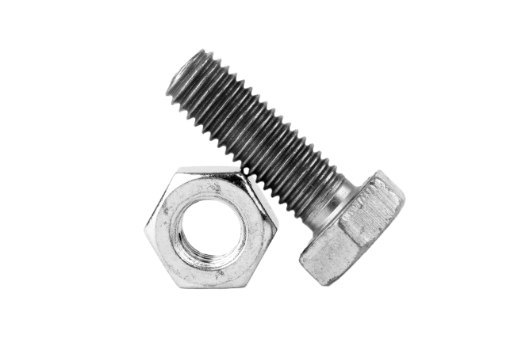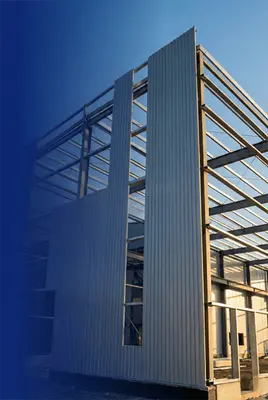Whether constructing commercial facilities, or anchoring heavy materials, choosing the right fastener is key to long-lasting results. Construction lag screws, often referred to as lag bolts, are widely used for demanding applications that require robust, reliable connections.
This guide explores their purpose, benefits, installation methods, and comparisons to other fasteners, providing the information builders need to make informed choices.
What Are Construction Lag Screws?
Construction lag screws are an indispensable component for projects requiring heavy-duty fastening solutions, offering strength and durability unmatched by standard screws for professionals and DIYers tackling demanding projects.
Definition and Features
Construction lag screws are heavy-duty fasteners featuring hexagonal heads and deep threads, designed for exceptional holding power. They are thicker and more robust than standard fasteners, making them ideal for projects demanding high load-bearing capabilities. Typically made from steel, these screws feature protective coatings like zinc or galvanization to resist corrosion, especially important in outdoor or harsh environments.
Common Applications
Lag screws are frequently utilized in construction projects involving:
- Attaching metal structures to concrete or masonry surfaces.
- Anchoring heavy machinery or equipment.
- Mounting substantial fixtures, such as industrial brackets or supports.
- Structural steel framing applications.
Their strength and durability make them highly valued for demanding construction environments.
Benefits of Using Lag Screws
Lag screws offer a combination of strength, durability, and versatility, making them a preferred choice for builders tackling demanding construction projects.
Strong Grip and Load Capacity
The deep threading of lag screws ensures a secure bond between materials, providing superior grip and stability. This makes them an excellent choice for joining large or heavy components.
Durability in Challenging Conditions
Lag screws are designed to last, even in harsh environments. Coated with zinc, galvanization, or stainless steel, they resist corrosion, making them ideal for outdoor use where exposure to moisture and UV rays is common.
Versatile and Reliable
These fasteners work efficiently with various materials such as metal and masonry. They are suitable for residential, commercial, and industrial projects, delivering consistent performance across diverse construction scenarios.
Maximizing the performance of construction lag screws starts with understanding the correct tools and techniques for their installation.
How to Properly Install Lag Screws
Installing lag screws correctly is crucial to ensuring their strength and reliability, requiring the right tools and techniques for the best results.
Tools Required for Installation
For a successful installation, gather the following tools:
- A power drill with a bit suited for pre-drilling pilot holes.
- A socket wrench or impact driver to drive the screws.
- Protective gear such as gloves and goggles.
- A measuring tape for accurate placement.
Step-by-Step Installation
- Pre-Drilling Pilot Holes: Drill pilot holes in masonry or metal surfaces slightly smaller than the screw diameter to facilitate smooth installation.
- Positioning the Screw: Align the lag screw with the pilot hole, ensuring it is straight for maximum holding strength.
- Meeting Penetration Standards: The National Design Specification (NDS) requires lag screws to penetrate the main member by at least four times the diameter of the screw (4D). This depth ensures the fastener provides adequate holding strength for structural stability.
- Driving the Screw: Insert the screw using a socket wrench or impact driver, tightening until the head is flush with the surface.
- Checking for Stability: Confirm the screw is secure, avoiding over-tightening, which can strip threads or damage surrounding material.
To determine when lag screws are the best choice, it's important to see how they compare to other common fasteners.
Comparing Lag Screws to Other Fasteners
Understanding how construction lag screws differ from other fasteners helps builders choose the most effective option for their specific project requirements.
Lag Screws vs. Structural Screws
Lag screws are thicker and better suited for heavy-duty tasks involving metal and masonry. Structural screws are lighter and quicker to install but typically can't match the load-bearing capacity of lag screws.
Lag Screws vs. Bolts
Bolts require pre-drilled through-holes and nuts for secure fastening, while construction lag screws are driven directly into the material without additional hardware. This makes lag screws more straightforward to use in situations where nuts and washers are impractical or unnecessary.
Choosing the appropriate lag screw ensures your project meets both its structural and performance requirements.
Selecting the Right Lag Screw
Using the right screw ensures your connections are secure and your project maintains its integrity over time.
Material and Coating
Choose a lag screw that matches the project’s environmental conditions. For outdoor use, galvanized or stainless steel screws offer excellent resistance to rust and corrosion. Zinc-coated screws are sufficient for indoor applications where exposure to moisture is minimal.
Size and Length
Select the appropriate size and length based on the materials being joined and the load requirements. Longer screws with a wider diameter are better suited for heavy timber or projects requiring greater structural support.
Proper upkeep and safe installation practices are key to maintaining the effectiveness and longevity of lag screws in any project.
Avoiding Common Installation Mistakes
Awareness of common errors ensures smoother installations:
- Over-Tightening: Avoid stripping threads or damaging material; use a torque-limiting driver.
- Incorrect Screw Length: Ensure proper engagement without excessive protrusion.
- Inadequate Corrosion Protection: Use galvanized or stainless steel screws for outdoor or corrosive environments.
- Misalignment: Ensure screws are inserted perpendicular to the surface for optimal strength.
Maintenance and Safety Tips
These practices contribute to the longevity of structures and the continued effectiveness of their fasteners.
Regular Inspections
Inspect construction lag screws periodically, especially in outdoor applications. Look for signs of rust, wear, or loosening to address potential issues before they compromise structural safety.
Replacement and Repairs
Replace screws that show visible signs of deterioration, such as corrosion or thread stripping. Keeping fasteners in good condition ensures long-term performance and safety.
Installation Precautions
Wear appropriate safety gear and use proper tools when installing lag screws. Slow, steady work helps prevent accidents and ensures precise, reliable installation.
With the right fasteners in hand, your construction projects can achieve the durability and reliability they demand.
Build with Confidence Using Fastener Systems
Fastener Systems offers a wide selection of lag screws designed to meet the demanding needs of construction professionals and DIY enthusiasts. From outdoor decking to heavy timber framing, our products provide unmatched durability and performance. Contact us today for more information.

